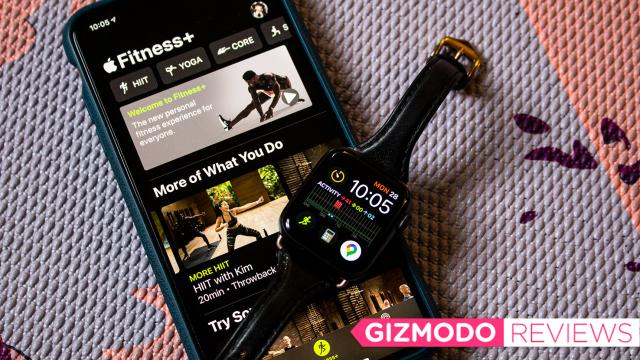Apple’s services aren’t terrible — it’s just the competition is usually better. Despite Apple’s best efforts, Spotify is most people’s music streaming app of choice. TV+ is nowhere near the best TV streaming service. Apple Arcade just doesn’t have much appeal to die-hard gamers. There are a bazillion other cloud storage services besides iCloud. But the newly launched Fitness+? Now here’s a service where Apple can actually compete.
Fitness+ is inevitably going to be compared to Peloton. Both are connected fitness platforms, both offer a library of on-demand classes featuring a stable of diverse instructors, and both have you buy an expensive gadget or two to get the best experience (though Peloton’s requirements are much less specific than Apple’s). We’ll get into the differences between these two services in a bit, but the sales pitch for Fitness+ is: “What if you could get the most seamless connected fitness experience anytime and anywhere you go?”
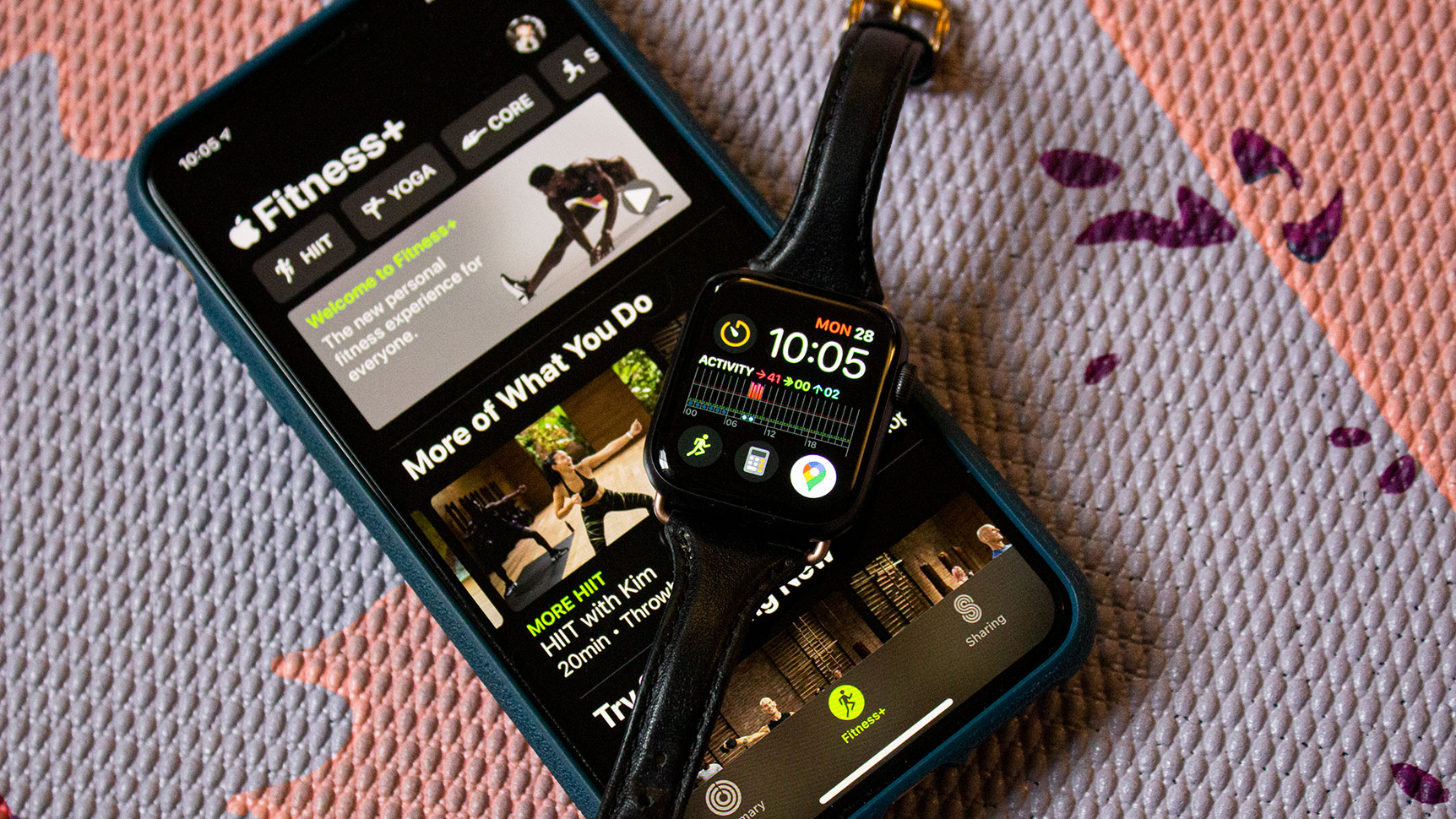
Apple Fitness+
What is it?
Apple's new on-demand fitness service
Price
$US10 ($13) a month; $US80 ($106) a year
Like
Great integration with the Apple Watch. Extremely inclusive. Great options for beginners. Very thoughtful UX and design.
No Like
Sometimes errs on the side of being too simple. No AirPlay 2 compatibility. Need a lot of Apple hardware for the best experience.
It’s a damn good pitch. Provided you have at least an iPhone and an Apple Watch Series 3 (or newer), you can open the Fitness app and stream workout classes from your home, gym (once those reopen), or even while travelling. The app works with your Apple Watch so you can see your rings — red Move for calorie burn, green Exercise for active minutes, and blue Stand for, well, standing — and metrics on screen in real-time. You can also start/pause/resume the workout straight from your wrist. And if you prefer a bigger screen, you can use Fitness+ with the iPad or Apple TV. The workouts encompass a variety of genres, including treadmill, cycling, rowing, core, HIIT, strength training, yoga, dance, and mindful cooldowns. All this will cost you a fairly decent price of $US10 ($13) a month, or $US80 ($106) a year.
[referenced id=”1659125″ url=”https://gizmodo.com.au/2020/12/i-love-this-bike-so-much/” thumb=”https://gizmodo.com.au/wp-content/uploads/2020/12/18/uw8zfucnyv41hiwq6fdk-300×169.jpg” title=”I Love This Bike So Much” excerpt=”Peloton is a cult. I say that lovingly and without judgment, because I am now part of it, and if you buy one, you will almost certainly become part of it, too. I didn’t realise how much I loved it until I recently found myself on Peloton Reddit trying to…”]
Fitness integration with the Apple Watch isn’t new to Fitness+. Apple’s GymKit, which third-party exercise machine manufacturers can integrate in their hardware to connect with the Apple Watch, has been around for a while. Boutique fitness studios like Orangetheory have also actively embraced the Apple Watch. However, unsurprisingly, Apple does it best with Fitness+.
One of the biggest selling points for Fitness+ is its incredibly thoughtful design. Unlike many other exercise apps, Fitness+ is extremely careful to ensure everyone — except Android users — feels welcome and has the most intuitive experience possible. For example, if you choose to work out with the Apple TV, it can automatically detect the total number of Apple Watch users in the house and will prompt you to choose who’s currently exercising. You’re also able to edit the metrics you see on-screen, so if you’d prefer the timer to count down rather than up, you can tweak that. If you don’t like the burn bar — a bar that shows you where you stack up to everyone else who’s done a particular cardio workout — you can turn it off. The metrics you see are also dynamic. If an instructor talks about your heart rate, you’ll briefly see a highlight of your current, highest, and lowest heart rate for that workout. If you close one or all of your rings, you’ll see that animation pop up on the screen.
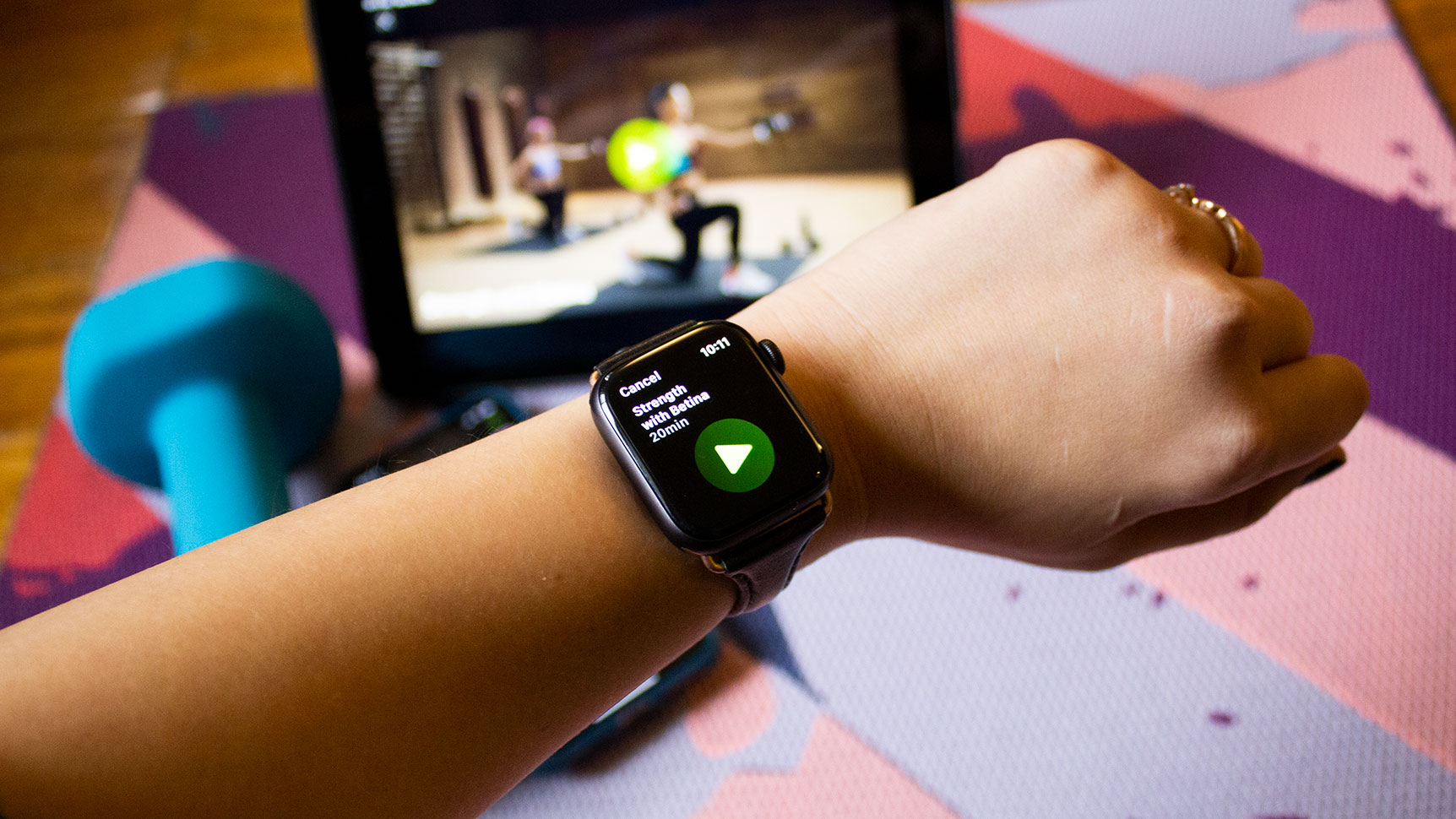
This solves a lot of annoyances found in other fitness apps. It’s so much better to not constantly glance at your wrist or an app to check your heart rate or how much time you have left to suffer. Also, you can’t underestimate the convenience of easily hitting pause from your wrist instead of having to run over to grab the remote, phone, or laptop. (It’s a minor pet peeve, but why do fitness instructors only give you 5 seconds to grab another set of dumbbells or switch to a resistance band or cable? Who, who is that fast?!?) Another neat feature is that if you like a featured song in the workout, it not only pops up on the screen with the artist and title, you can also easily find it afterward in the class description and import it into Apple Music.
But what about the content itself? Collectively, three of your dedicated Gizmodo reviewers have done upwards of 20 Fitness+ workouts in the two weeks since it launched. The workouts range from 10 to 45 minutes, and you will sweat, regardless of your individual skill level. There are always three instructors in each workout, one of whom will always be showcasing modifications. If, say, yoga instructor Jessica is slightly misguided and asks you to do crow pose during a yoga workout when you absolutely cannot, you have options. In real life, yoga teachers tend to tell you to chill if you can’t do an advanced pose, or you have to flag them over for any modifications — which isn’t always what you want and can be embarrassing. Likewise, if you have a knee injury but still want to do a HIIT workout, there’s always lower-impact options that are still challenging. The instructors also offer ways to make workouts harder, but you overachievers can keep that to yourselves.
At this point, the limited content selection makes filtering by specific workout a little tough. “Core,” for example, is a crapshoot of Pilates, strength training, and weights — though it’s fairly easy to see what you’re in for, thanks to a Preview feature for each workout. It’s also possible Apple will expand its Fitness+ categories down the line when its library is large enough to support more targeted workout filtering.

Inclusion is also a big part of Fitness+. The instructors are ethnically and physically diverse. For example, Jessica is willowy like you might expect a yoga instructor to be, but Sam and Bettina could both crush me with their thighs and biceps and I’d thank them. Strength and core instructor Amir is an amputee; he’ll also pop up in some HIIT workouts and absolutely crushes it. You’ll notice that most instructors use ASL during workouts as well. (One glaring exception at launch is prenatal workouts, a feature of rival live and 0n-demand services like Peloton and Obé.)
During a hip-hop-inspired dance workout with LeShawn, there were definitely some relatable missteps and awkward hip motions from the other instructors following along. None of them are quite as HYPE as Peloton’s instructors (to be fair, few people can be that hype), but generally, they tend to be on the warm and encouraging side. If overly smiley instructors aren’t your thing, some are more stoically calm. Basically, you have options; you’re bound to find at least a few favourites.
That said, Fitness+ does perhaps err on the side of simplicity and caters to beginners. It’s not that you don’t get a good workout if you’re a veteran — it’s just the workouts may not use more advanced equipment or techniques you prefer. This depends somewhat on the workout type. For instance, none of the strength workouts we tried required more than a set of dumbbells and a mat. If you’re looking for workouts that utilise barbells, punching bags, jump rope, pull-up bars, weight benches, cables, or resistance bands, you’ll be left wanting. The same is true if you’re looking for goal-based training programs, like a Couch to 5K or training for a marathon. Likewise, while Peloton and Aaptiv both offer audio-only workouts for outdoor runners, with Fitness+ you’re limited to the treadmill.
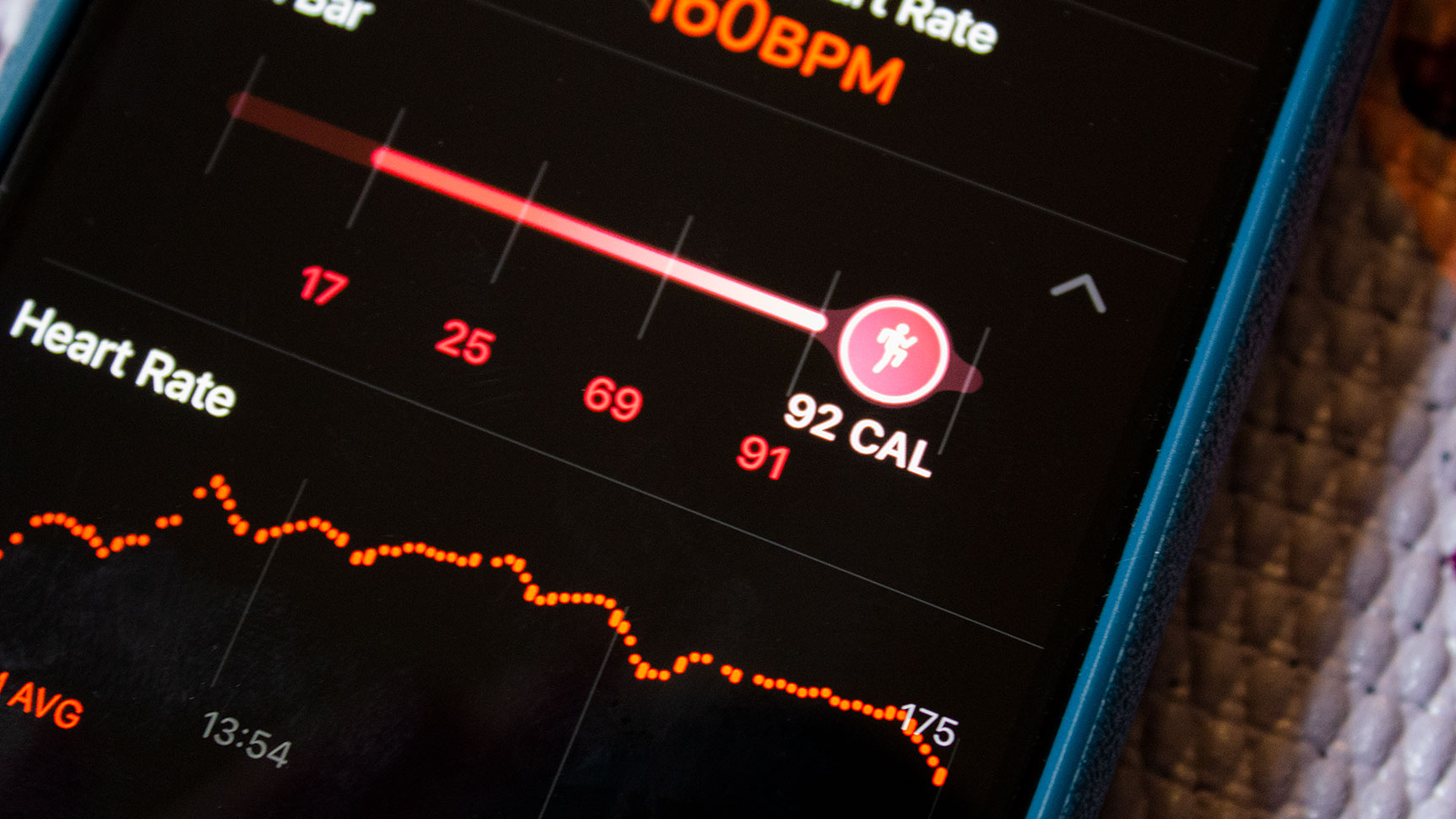
This beginner focus isn’t necessarily bad. The absolute beginner program is a welcome addition, and it’s great that Fitness+ includes some instructional videos on how to properly use equipment like a rower, stationary bike, or treadmill. It just means you might not be able to get rid of some of your other fitness apps. For example, avid outdoor runners probably won’t be able to fully replace apps like Strava, MapMyRun, or RunKeeper.
The same goes for folks who rely on apps like Peloton for things like guided meditation. The 10-minute mindful cooldowns manage to scratch this itch for the time being, but it would be great to see Apple expand on this category down the line. A dedicated Pilates section would also be welcome, as would more descriptive titles on individual workouts.
From an app design standpoint, it would also be nice if Fitness+ let you sort by workout intensity, required equipment, or areas of the body a particular workout focuses on. For instance, if you’re travelling, it would be helpful to sort strength workouts that require bodyweight only, or if you’ve got sore legs, perhaps mindful cooldowns that target the lower body. As of right now, you can only sort by instructor, duration, and music genre. The descriptions of each workout generally go into more detail, but that means you have to do a bit more sifting before you choose.
Apple’s Fitness+ algorithms take into account workouts you’ve already done — either in Fitness+, on your Apple Watch, or in third-party apps connected Apple Health — to recommend workouts to try next. The app should offer workouts that are more like ones you’ve already done, or workouts that are brand new. But the recs so far are a tad basic. While it quickly figured out the types of workouts I do, I haven’t necessarily gotten cross-training recommendations as of yet. For the most part, I’ve just gotten suggestions to try other instructors within the exercises that I already do. One Giz staffer primarily does a lot of cardio — outdoor runs and Peloton rides — so she was expecting more strength-training and stretching recommendations. Instead, the app told her to take a treadmill class because she enjoys walking.
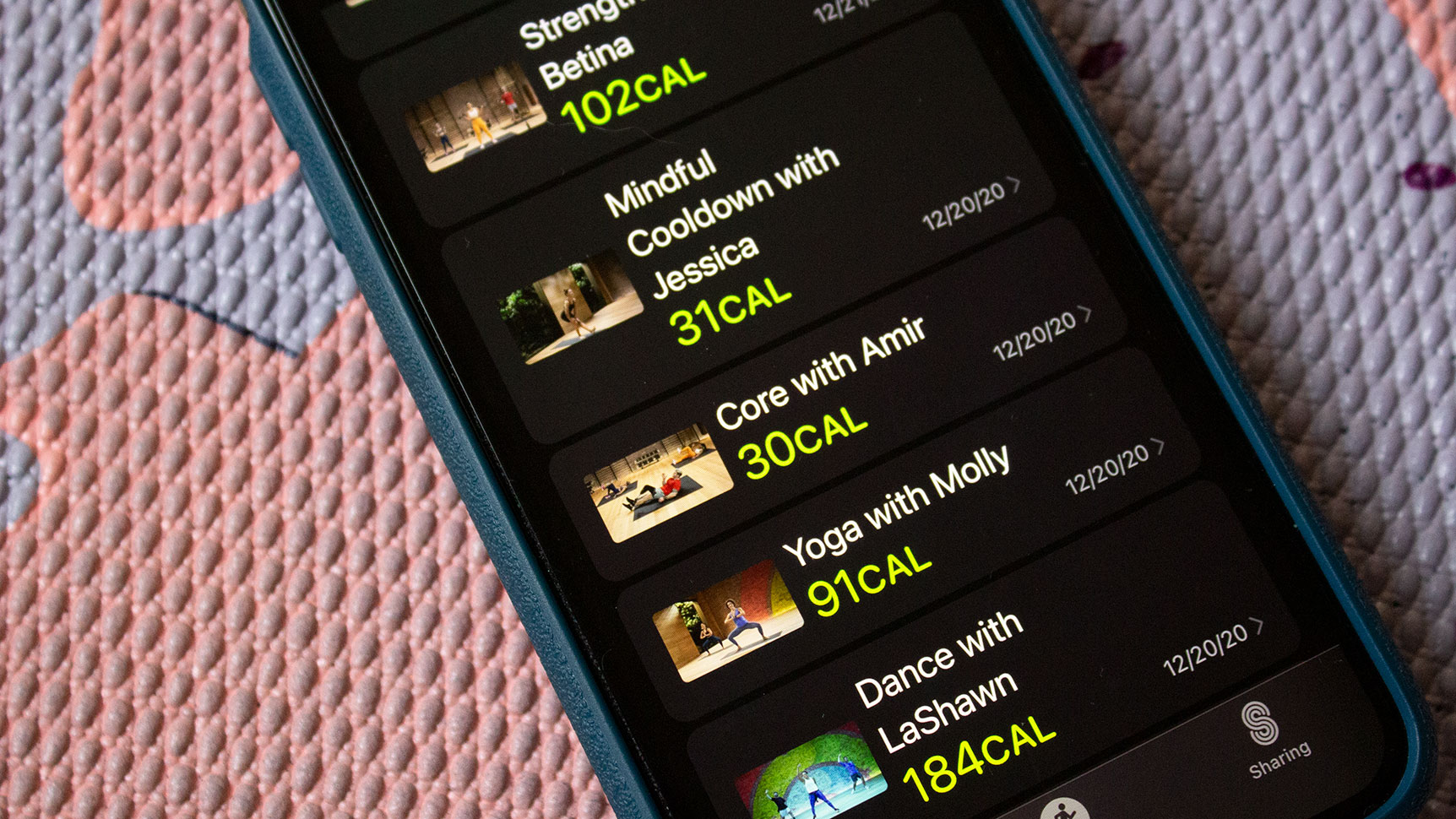
Fitness+ also has limited social features compared to other fitness apps. You can share workouts to social media and any friends you’ve connected with on the Apple Watch can see exactly which Fitness+ workouts you’ve done, but that’s about it. If you want to do a dance session with a friend in person, you can, but they’d have to record that workout manually. There’s also no such thing as competing in real time with leaderboards, and there are no instructors shouting out your birthday because all these workouts are prerecorded. This may or may not be a con, depending on your preferences. Personally, the burn bar let me feel competitive without wrecking my self-esteem.
The tight integration between Fitness+ the app and Apple’s hardware is excellent — until it isn’t. It’s hard to work out with the iPhone unless you have a phone holder or stand of some type. The iPad is a better option, but again, you might find yourself having to move the tablet around to see during certain workouts or positions. It also impacts how much information you see directly on-screen when browsing through workouts. Also, while the Fitness+ tab/app should pop up automatically once you update your iPhone or Apple TV, you’ll have to manually download the Fitness+ app on the iPad. And Fitness+ can’t be cast to a TV via AirPlay 2. To get workouts on the TV, you must own an Apple TV set-top box. This probably has something to do with the Apple Watch component of Fitness+, but it is a bit of a bummer as the TV is really the best way to experience the workouts.
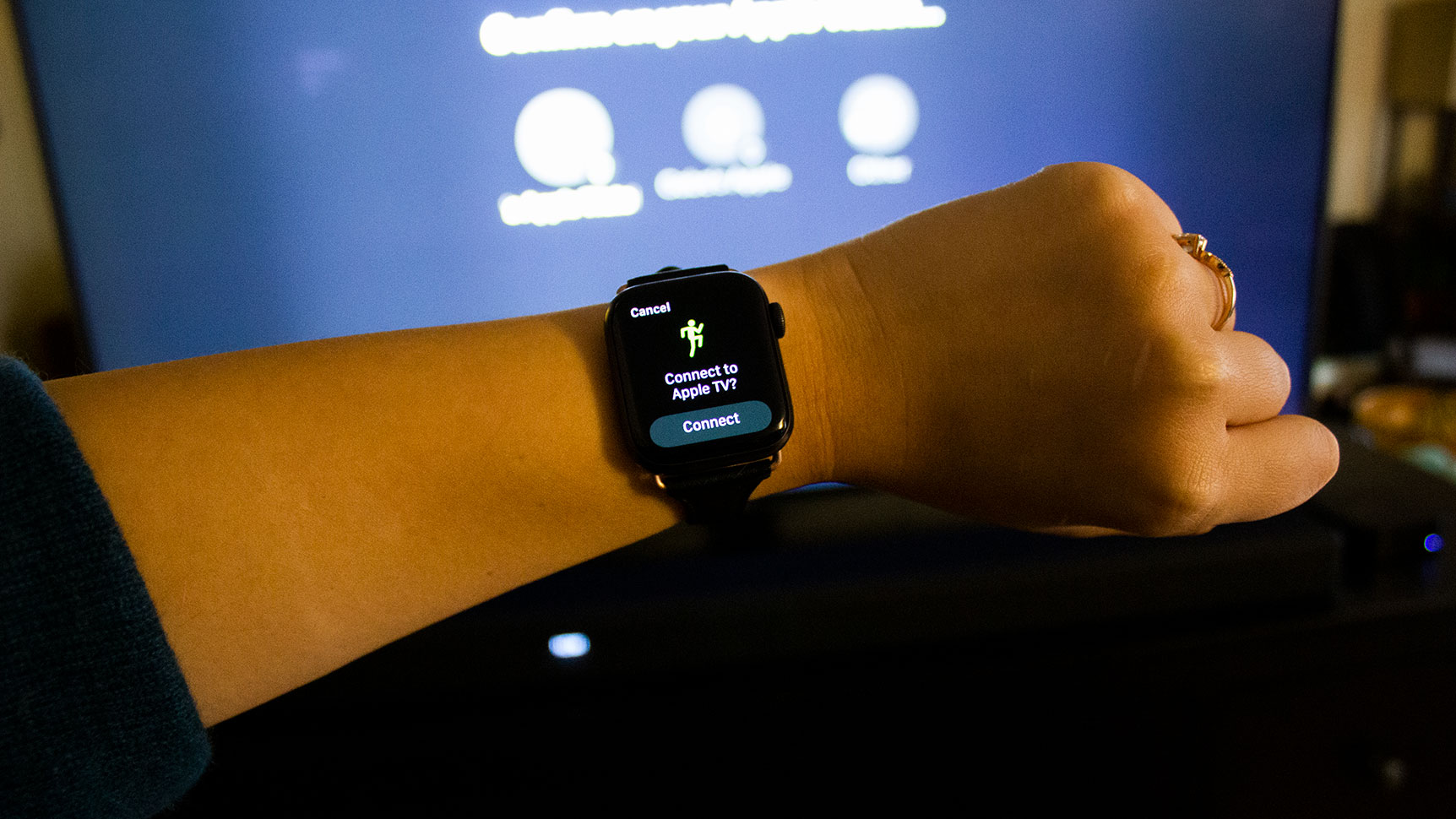
But even if you own an iPhone, iPad, and Apple TV, you can’t subscribe to Fitness+ without an Apple Watch. Sure, there are discounted options with the Series 3 (but seriously, don’t buy a new Series 3) and the Watch SE, but you’re still talking about dropping a few hundred dollars on a smartwatch. To sweeten the pot, Apple is offering a free one-month trial for existing Apple Watch owners, as well as a three-month trial if you buy a new watch between Sept. 15, 2020, and March 31, 2021. It’s smart on Apple’s part, and great if you’re already in the Apple ecosystem, but otherwise, it’s much pricier than subscribing to a hardware-free fitness app.
That brings us to Apple’s biggest competitor, Peloton. The company offers its library of on-demand workouts for $US13 ($17) a month if you don’t own one of its bikes or treadmills, and the classes are extremely good. You won’t get the same seamless Apple Watch integration, though Peloton does have apps for Apple Watch and Apple TV, as well as on other TV platforms, which makes it accessible to more people. Peloton also offers a wider variety of workouts (including ones that Fitness+ lacks, like Pilates and barre), and many of the classes are much more advanced than the ones Apple offers.
Ultimately, Fitness+ is best for beginner and intermediate levels, people looking to restart a fitness routine, or folks who are intimidated by fitness/gym culture. If that’s you, you’ll probably really enjoy Fitness+. I actually wish Apple would double down on this and add classes specifically targeted toward folks who are elderly or who have mobility issues. The Apple Watch is already a compelling purchase for seniors due to its heart health features, blood oxygen-tracking, and emergency fall detection. Fitness+ could complement that with chair exercise classes, for instance.
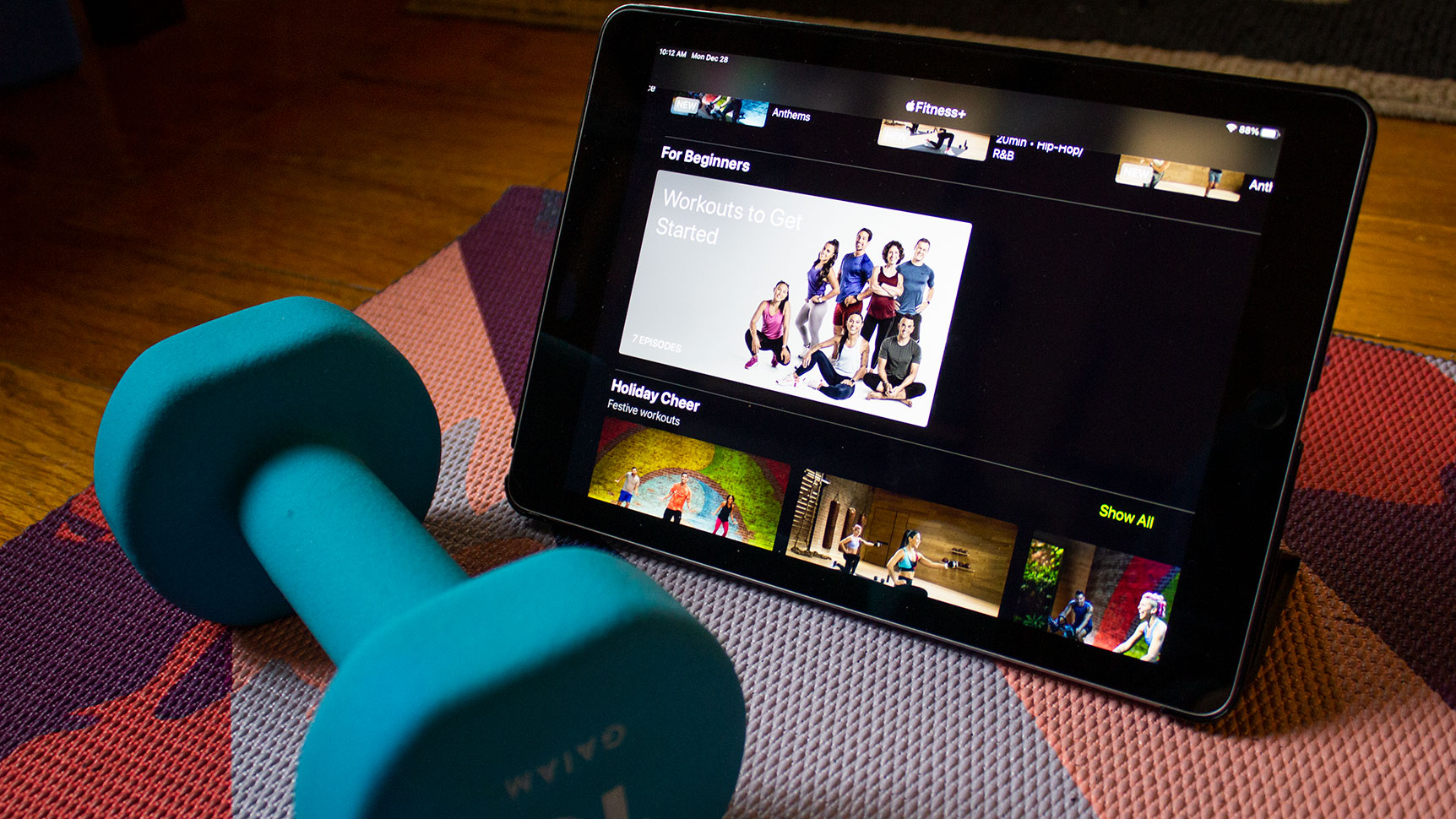
Fitness+ is still being built out. It’s got a decent number of videos, but its library is still much smaller than some competitors and it doesn’t offer some more niche exercises that you can find in other workout apps. This isn’t really a huge problem, unless your preferred form of exercise isn’t offered, because new classes drop every Monday. It’s virtually impossible to run out of classes unless you’re doing 6-7 workouts per day. We’ll have to see if Apple addresses issues like AirPlay 2 compatibility, adds new workout types and difficulty levels, or extends the service to non-Apple Watch owners. But Fitness+ is still off to a promising start. This is one of the best services Apple’s launched thus far, and one that might actually go the distance.
README
- Apple’s on-demand fitness subscription service costs $US10 ($13)/month or $US80 ($106)/year, and can be used with an Apple Watch Series 3 or later, as well as the iPhone, iPad, and Apple TV.
- Lots of different workout types, but best suited for beginner or intermediate levels. (That’s not a bad thing!)
- Probably not enough content to be a one-stop app for hardcore fitness nerds.
- One of the most diverse and inclusive fitness apps.
- While reasonably priced, you do have to invest in Apple hardware.
